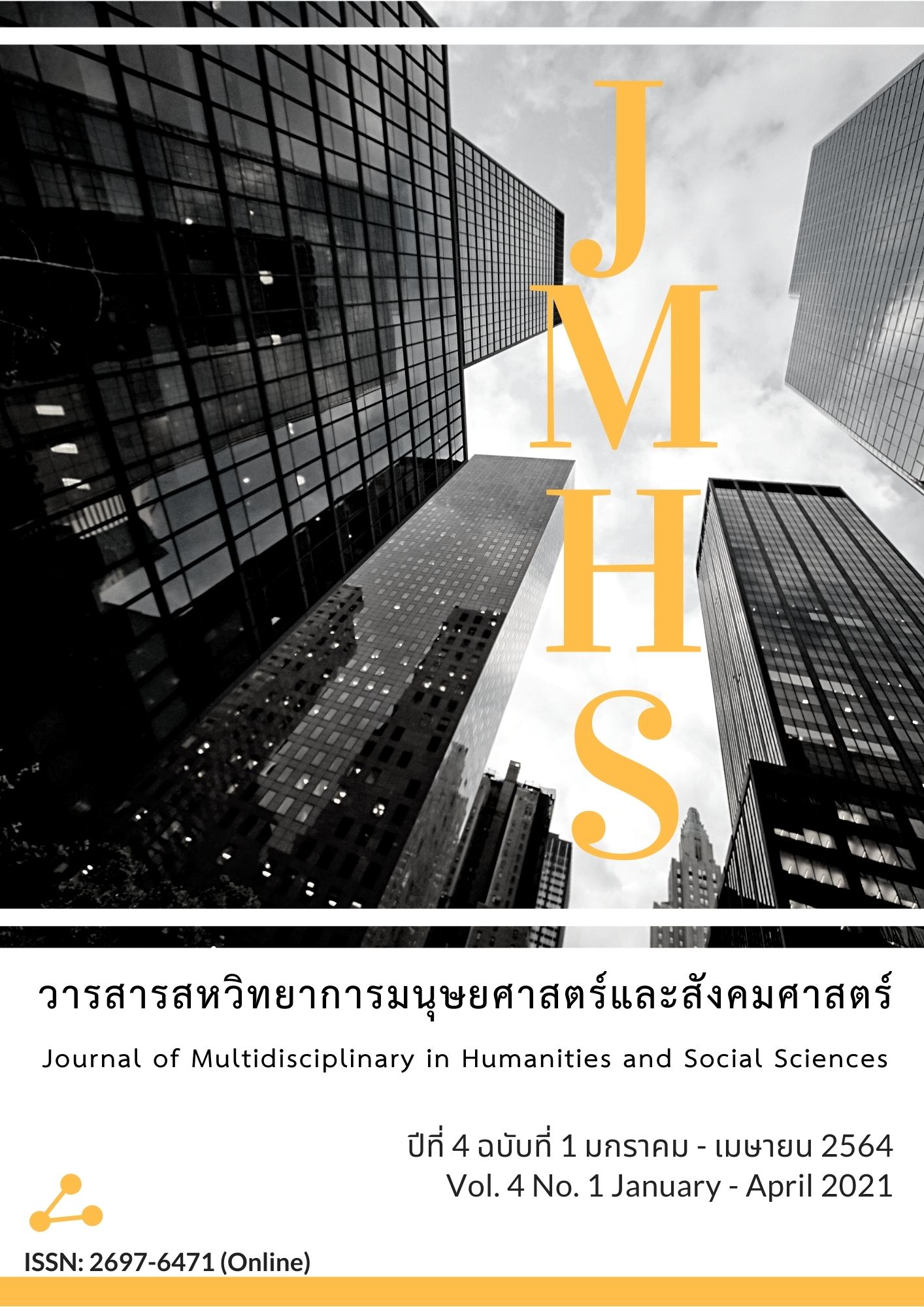How to Manage Risks for the Organization without Crisis
Main Article Content
Abstract
At present, government agencies have given priority to risk management. The Public Sector Development Commission has determined that various government agencies make a risk management plan according to the strategic plan. In strengthening government agencies in order to achieve the goals those are set including to comply with the government administration regulations Ministry of Education 2003. And regulations of the State Audit Commission Regarding the Establishment of Internal Control Standards 2001. The government must have a risk assessment and improve the internal control system to reduce the root cause of the risk.
Enterprise risk management it is a management method and control various operational processes by reducing the causes and opportunities that the organization will be at risk to keep the level of risk and the magnitude of future risks being acceptable, assessable, and controllable so that the organization can achieve its objectives. Risk of every organization according to the context of that organization and divided into 4 types 1) Strategic risk, 2) Operational risk, 3) Financial and reporting risk, and 4) Compliance Risk. The risk management system will help reduce the chance of loss. And increase the chances of success of the work even more. It also resulted in a greater understanding of the work of personnel in the organization. Able to analyze, assess and be careful of the risks in their duties. This makes it possible to work more efficiently and achieve goals.
Article Details
Views and opinions appearing in the Journal it is the responsibility of the author of the article, and does not constitute the view and responsibility of the editorial team.
References
โกสิฐ นันทินบัณฑิต. (2563). การบริหารการข่าวของผู้บริหารสถานศึกษา. วารสารศิลปการจัดการ, 4(2), 489-502.
เฉลิมศักดิ์ นามเชียงใต้. (2552). การบริหารความเสี่ยงในสถานศึกษา. วารสารข้าราชการครู, 29(1), 40-46.
ชัยเสฏฐ์ พรหมศรี. (2550). การบริหารความเสี่ยง. กรุงเทพฯ: ออฟเซ็ท ครีเอชั่น.
นฤมล บินหะยีอาวัง. (2553). ความคิดเกี่ยวกับการบริหารความเสี่ยงในสถานศึกษาขั้นพื้นฐานของผู้บริหารโรงเรียนเอกชนสอนศาสนาอิสลาม เขตกรุงเทพมหานครและปริมณฑล (วิทยานิพนธ์ศึกษาศาสตรมหาบัณฑิต สาขาวิชาการบริหารการศึกษา). มหาวิทยาลัยรามคำแหง.
นฤมล สะอาดโฉม. (2550). การบริหารความเสี่ยงองค์การ. กรุงเทพฯ: ฐานบุ๊คส์.
นิรภัย จันทร์สวัสดิ์. (2551). การบริหารความเสี่ยง. กรุงเทพฯ: จุฬาลงกรณ์มหาวิทยาลัย.
มงคล กิตติวุฒิไกร และมนัสดา ชัยสวนียากรณ์. (2558). ผลกระทบของการบริหารความเสี่ยงที่มีผลต่อความสำเร็จในการทำงานของธุรกิจ SMEs ในจังหวัดมุกดาหาร. วารสารมนุษยศาสตร์และสังคมศาสตร์, 6(1), 105-118.
มยุรี วรรณสกุลเจริญ และชาญณรงค์ รัตนพนากุล. (2563). ประสิทธิผลขององค์การ. วารสารศิลปการจัดการ, 4(1), 193-204.
มหาวิทยาลัยขอนแก่น. (2559). คู่มือการจัดทำแผนบริหารความเสี่ยงมหาวิทยาลัยขอนแก่น. ขอนแก่น: ฝ่ายวางแผนยุทธศาสตร์ มหาวิทยาลัยขอนแก่น.
ศตวรรษ สงกาผัน. (2563). การพัฒนารูปแบบป้องกันการทุจริตเพื่อสร้างอนาคตร่วมกันของประชาชนในอำเภอเมือง จังหวัดเลย. Journal of Modern Learning Development, 5(5), 28-41.
สถาบันเทคโนโลยีพระจอมเกล้าพระนครเหนือ. (2551). คู่มือบริหารความเสี่ยงมหาวิทยาลัยเทคโนโลยีพระจอมเกล้าพระนครเหนือ. กรุงเทพฯ: ศูนย์ผลิตตำราเรียน.
สำนักงานคณะกรรมการพัฒนาระบบราชการ. (2552). คู่มือการพัฒนาคุณภาพการบริหารจัดการภาครัฐ ปีงบประมาณ พ.ศ. 2553. กรุงเทพฯ: ก.พลพิมพ์.
สำนักงานปลัดกระทรวงมหาดไทย. (2550). คู่มือการบริหารความเสี่ยง. กรุงเทพฯ: สำนักงานปลัดกระทรวงมหาดไทย.
สำนักงานปลัดกระทรวงศึกษาธิการ. (2553). การบริหารความเสี่ยงของสำนักงานปลัดกระทรวงศึกษาธิการ: แผนปฏิบัติราชการประจำปี 2553. กรุงเทพฯ: สำนักงานปลัดกระทรวงศึกษาธิการ.
สุริยศักดิ์ มังกรแก้ววิกุล และศิริวัฒน์ สิริวัฒนกุล. (2563). ปัญหาการนำนโยบายสาธารณะขององค์กรปกครองส่วนท้องถิ่นไปปฏิบัติ: กรณีศึกษาองค์การบริหารส่วนตำบลสาวชะโงก อำเภอบางคล้า จังหวัดฉะเชิงเทรา. วารสารศิลปการจัดการ, 4(2), 205-222.
อาพัชรี วงษ์อุปปา. (2550). การบริหารความเสี่ยงของศูนย์การศึกษานอกระบบและการศึกษาตามอัธยาศัยอำเภอ สังกัดสำนักงานส่งเสริมการศึกษานอกระบบและการศึกษาตามอัธยาศัยจังหวัดกาญจนบุรี (การค้นคว้าอิสระครุศาสตรมหาบัณฑิต). มหาวิทยาลัยราชภัฏกาญจนบุรี.
Roth, J. (2007). Categorizing Risk: Risk Categories Help Users Identify, Understand, and Monitor Their Organizations’ Potential Risks-Risk Watch. Retrieved from http://findartictes.com/p/articles/mi_m4153/is_2_59/ai_85014799.

